火箭爐保溫器
Rocket mass heaters in a nutshell:heat your home with 80% to 90% less wood
exhaust is nearly pure steam and CO2 (a little smoke at the beginning)
the heat from one fire can last for days
you can build one in a day and half
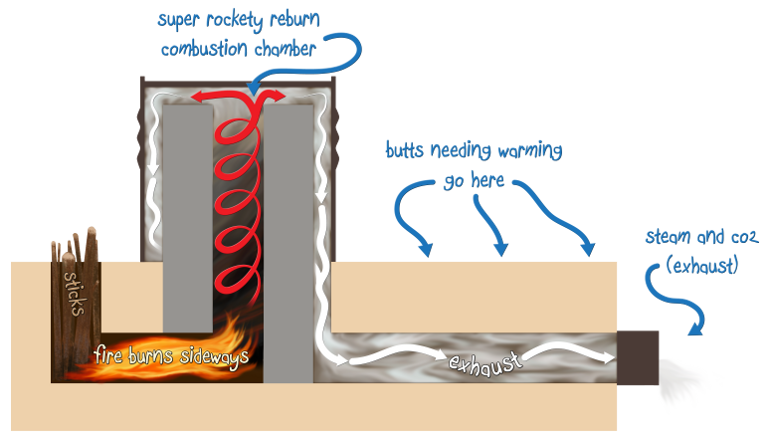 folks have built them spending less than $20
folks have built them spending less than $20 the verbose details on rocket mass heaters: This could be the cleanest and most sustainable way to heat a conventional home. Some people have reported that they heat their home with nothing more than the dead branches that fall off the trees in their yard. And they burn so clean, that a lot of sneaky people are using them illegally, in cities, without detection.
When somebody first told me about rocket mass heaters, none of it made sense. The fire burns sideways? No smoke? If a conventional wood stove is 75% efficient, doesn't that mean the most wood you could possibly save is something like 25%? How do you have a big hole right over the fire and not have the house fill with smoke? I was skeptical.
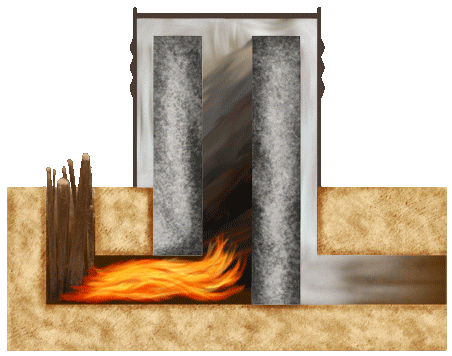 And then I saw one in action. The fire really does burn sideways. The exhaust is near room temperature - and very clean. The smoke doesn't come back up because a huge amount of air is getting sucked into the wood hole. Neat! I sat on one that had not had a fire in it for 24 hours - it was still hot!
And then I saw one in action. The fire really does burn sideways. The exhaust is near room temperature - and very clean. The smoke doesn't come back up because a huge amount of air is getting sucked into the wood hole. Neat! I sat on one that had not had a fire in it for 24 hours - it was still hot!how it works:
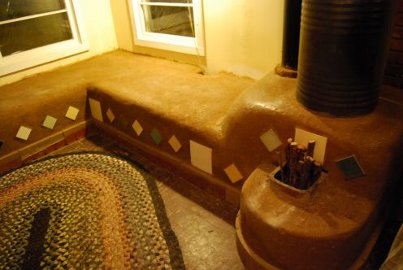 The sticks stand straight up. Only the bottom ends of the sticks burn. The fire burns sideways. Since the heat riser is insulated, it gets freaky hot. This causes a strong convective current. When the hot gasses hit the barrel, it gives off a lot of heat, which cools the gasses which get much smaller and easier to push around. The gasses that exit are usually just carbon dioxide and steam.
The sticks stand straight up. Only the bottom ends of the sticks burn. The fire burns sideways. Since the heat riser is insulated, it gets freaky hot. This causes a strong convective current. When the hot gasses hit the barrel, it gives off a lot of heat, which cools the gasses which get much smaller and easier to push around. The gasses that exit are usually just carbon dioxide and steam.The real magic happens with the heat riser. The strong convective current is what makes the air get sucked in through the wood feed so that the fire burns sideways and the smoke doesn't come out. It is also the place where it gets so hot that all of the smoke is burned.
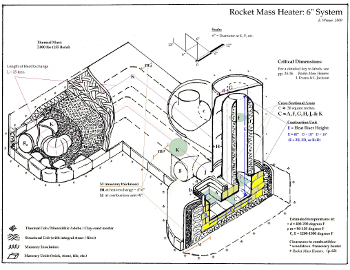 Here (right) is a much better image showing the mighty power of the insulated heat riser, reburning the smoke and powering the whole system.
Here (right) is a much better image showing the mighty power of the insulated heat riser, reburning the smoke and powering the whole system.The first picture below represents the most thorough rocket mass heater design I have ever seen. Followed by the rocket mass heater that was created from that design. These are both the products of the leaders in rocket mass heater innovation, Ernie and Erica Wisner, who have built more than 700 rocket mass heaters.
rocket mass heater vs. conventional wood stove
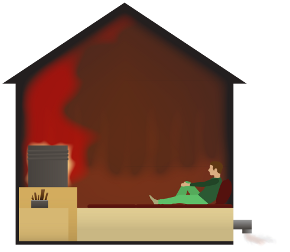 |
| 火箭爐保溫器生熱無煙 |
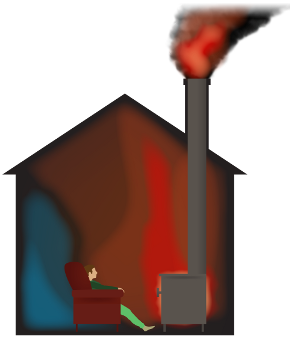 |
| 傳統柴爐有煙無熱 |
- 1) Measure the temperature and volume of the smoke leaving a conventional wood stove (very hot and a large volume) and compare that to the exhaust of a rocket mass heater (a little more than room temperature and a trickle). Far more heat stays inside with a rocket mass heater. 2) Let's do the math.
- a) A rating of "75% efficient" does not account for some of the heat that goes up the chimney to remove the smoke. The testing labs will use a number of either 14% or 16% for smoke going up the chimney. So the 75% number is actually 64%. Saying 75% is allowed and sells more wood stoves. b) The rating of 75% was the most efficient result experienced in a laboratory with experts trying to get the most efficient numbers. So while a wood stove might be able to achieve 75% efficiency in a lab, it rarely does in a home. An experienced wood stove operator will probably experience something more like 35%. Somebody using wet/green wood and shutting the dampers down a lot for a "slow burn" will probably experience something more like 5% efficiency (or less!) with a 75% efficient wood stove. Thus leaving a lot of room for improvement. Rocket mass heaters have no way to reduce the air flow for a slow, inefficient burn. An inexperienced wood burner will probably have a 90% efficient burn every time.
Here is Ernie talking about how replacing a conventional wood stove with a rocket mass heater and how he now uses 1/8 of the wood he used to use:
rocket mass heaters in action
When I first learned about rocket mass heaters, I desperately needed to see a video because what I was told was so .... different. There was nothing! So I now have lots of videos so people can see for themselves, the things that seem so new. This is just a few of the videos.A short video making the rocket mass heater exhaust aspect really clear:
A general tour of 12 rocket mass heaters:
This second video is a day and a half workshop on building rocket mass heaters compressed into ten minutes:
My first attempt at building a rocket mass heater without somebody to guide me. This is an attempt at a semi-portable rocket mass heater. Plus a nice burn demo.
The latest from Ernie and Erica - complete with some innovations. This video focuses on how efficient a wood burning stove can be.
The leading innovators today on rocket mass heaters are Ernie and Erica Wisner. They have built over 700 rocket mass heaters and their recent designs are superior to the designs of systems five to ten years ago. They are the moderators for thewood burning stoves forum. If you like this sort of thing, then the next step is to buy one of these two designs:
Check out all of the wood burning stoves offerings from Ernie and Erica.
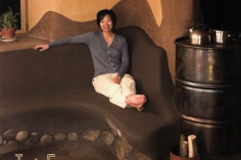
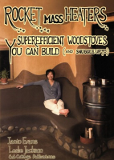 Although a lot has happened since this book was written, this book still has a lot of good information. It has explanations on how this type of wood burning stove works in general. Rocket Mass Heater Book
Although a lot has happened since this book was written, this book still has a lot of good information. It has explanations on how this type of wood burning stove works in general. Rocket Mass Heater Book- fire brick
- sand
- clay
- duct
- 55 gallon barrel
- 55 gallon stainless steel barrel (Ooooo - fancy!)
- 30 gallon barrel
- perlite
- high temp thermometer
Discussion thread at permies: greenhouse with a rocket mass heater
And this one shows the rocket mass heater barrel prep. Complete with an excellent demonstration of the rockety stuff - check out that smoke reburn!
Here is Ernie's conventional wood stove / rocket mass heater hybrid, which gives a lot of info on how a rocket mass heater can heat a space with 90% less wood than a conventional wood stove:
This is my grand video on my portable rocket mass heater. This features four huge innovations: a wood frame aesthetic (a bit rough, but the trail is now blazed for better wood workers); portable (can be taken apart and put on truck in less than an hour; can be taken off of a truck and built in a little over an hour); a heat riser that goes all the way to the ground instead of sitting on bricks; the thermal mass is a collection of pea gravel and river rock (that allows air to pass through) instead of cob. This video has a lot of details of construction.
rocket mass heater podcasts
As I was designing my portable rocket mass heater innovations, I called Ernie and Erica several times. After all, they know far more than I do. After the great Earth Day success I recorded a podcast with them. Not only to have a podcast loaded with rocket mass heater / rocket stove info, but to gloat a bit about the success of my innovation:
Later, I was creating another podcast which ended up being all about heating water - mostly with a rocket stove:
more on rocket mass heaters



 underfloor heating and hot water with a rocket mass heaterportable rocket mass heater
underfloor heating and hot water with a rocket mass heaterportable rocket mass heater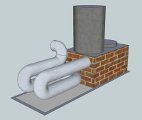
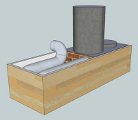

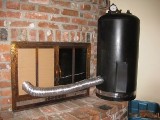
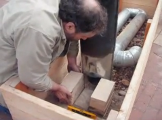


 underfloor heating with a rocket mass heater - plus an exhaust bypassthe original rocket stove and butt warmer thread at permies
underfloor heating with a rocket mass heater - plus an exhaust bypassthe original rocket stove and butt warmer thread at permies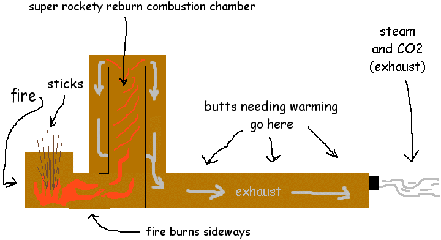
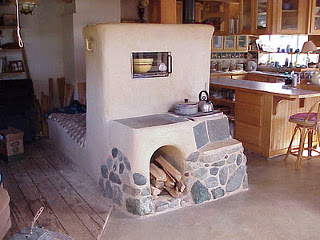
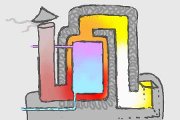


Come on out to the alternative energy forum to talk about rocket mass heaters, rocket stoves, wood heat, heating water, and gobs more stuff.

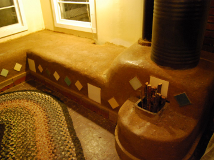
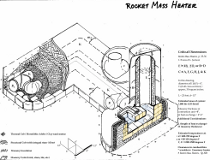
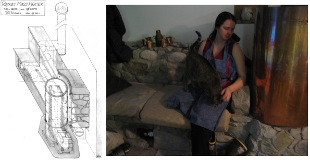
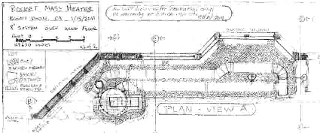
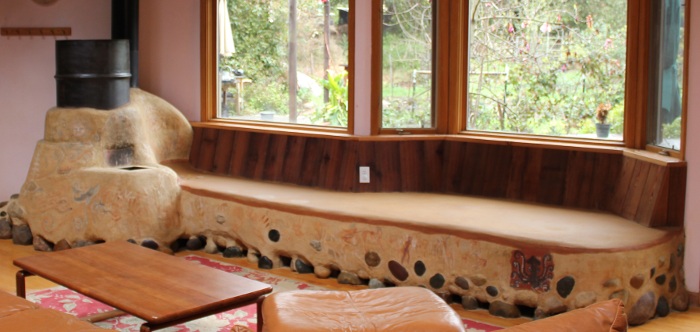
留言